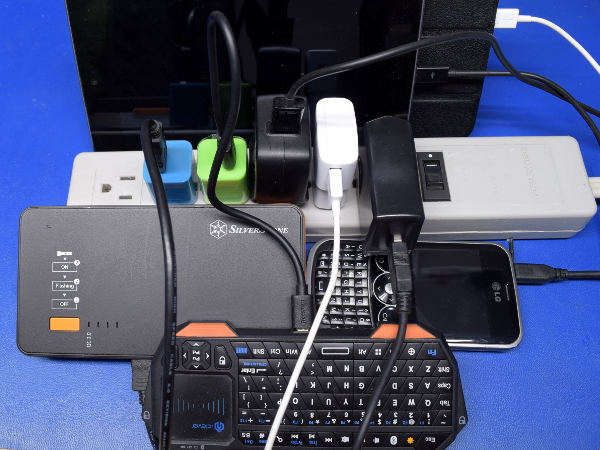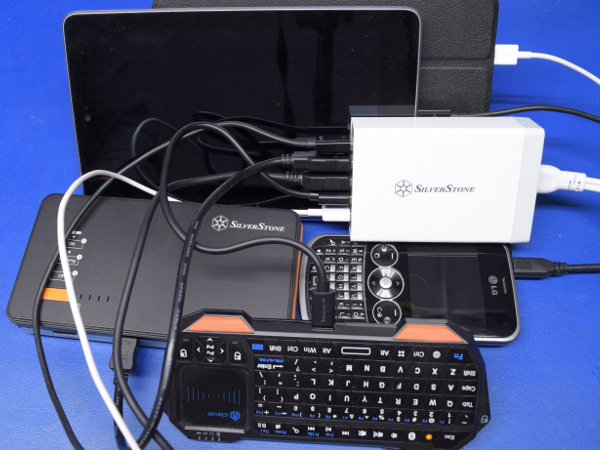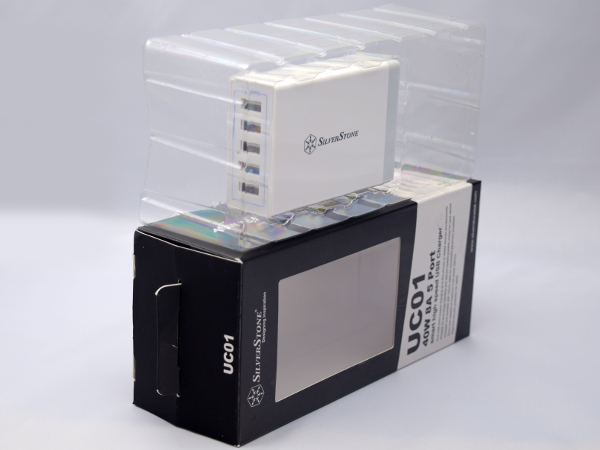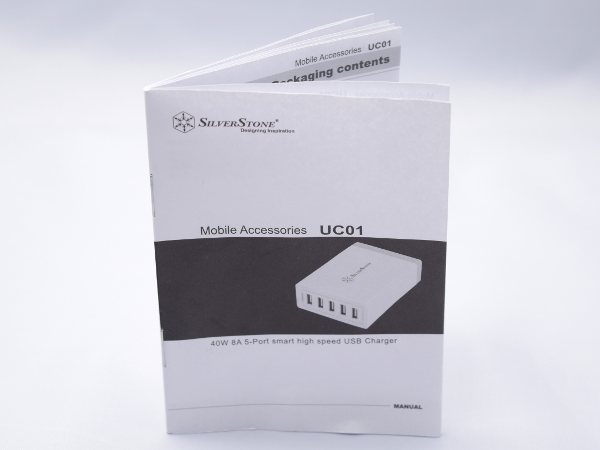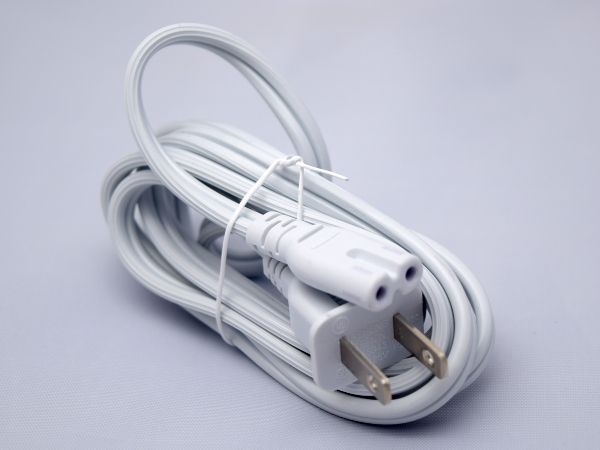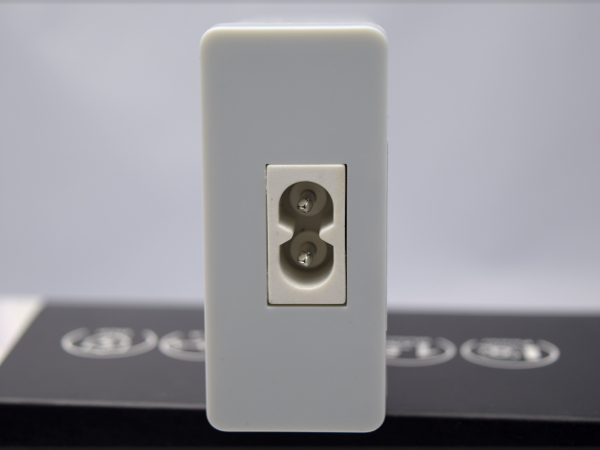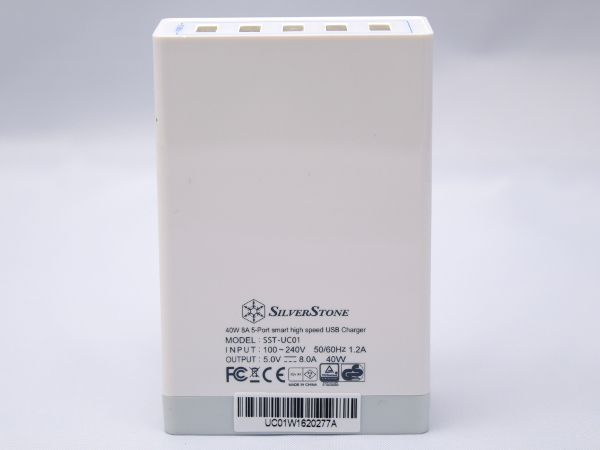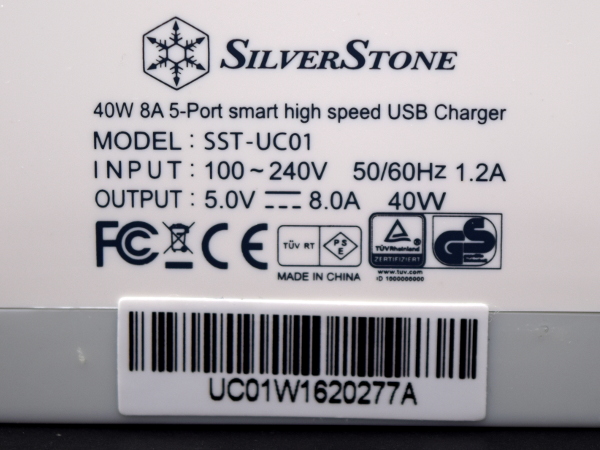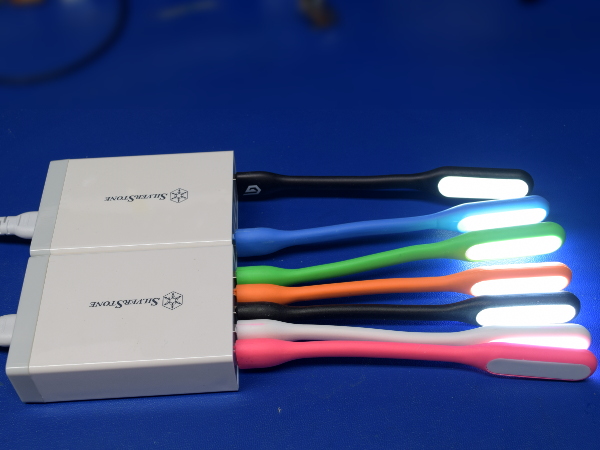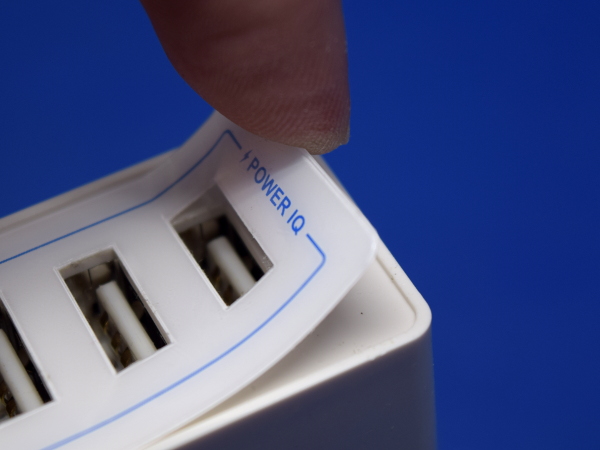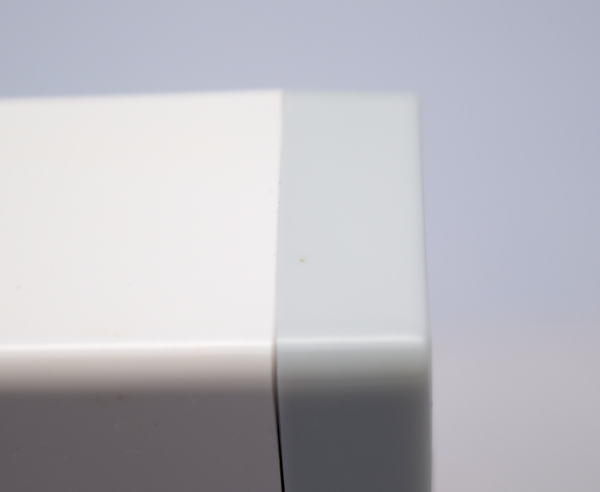Tom's Teardown: SilverStone UC01 USB Power Adapter
Powering Everything
If your gadget-charging corner looks anything like mine, then you have one power adapter for each of your phones and another for each of your tablets. Then, there's the power adapter for your wireless headset, wireless game controller, wireless keyboard, wireless mouse, USB power bank, and every other device with a lithium cell inside. Are you yearning for a way to reduce clutter?
Then you may be interested in a multiple-output AC adapter to help replace your many power strips worth of 5V power bricks. According to SilverStone’s marketing, that's exactly what the UC01 was designed to do.
Don’t worry about me or my devices; the power bar isn’t plugged in!
MORE: APC BN650M1-CA UPS Tear-Down
MORE: CyberPower EC350G Tear-Down
MORE: How (And Why) We Test USB Power Adapters
Clutter Redux
Simply removing the power bar and discrete adapters by substituting in SilverStone's UC01 clears up a lot of the clutter. I’m generally not a fan of super-short (~12”) cables, but I have to concede that they would have helped tidy up even more.
Get Tom's Hardware's best news and in-depth reviews, straight to your inbox.
Does the ~$35 UC01 deliver high-enough quality to make us want to swap out our trustworthy OEM adapters? I received one of these over a year ago, and have had it on my workbench ever since. It's time to find out exactly how well the UC01 withstood a year of moderate use.
MORE: APC BN650M1-CA UPS Tear-Down
MORE: CyberPower EC350G Tear-Down
MORE: How (And Why) We Test USB Power Adapters
Packaging
Seeing the AC adapter suspended in a polyethylene carrier like this makes me think SilverStone expected people to play football with the box. Otherwise, it could have been half the size and still had enough room to accommodate a modular power cord.
The output ratings, port count, and cord length get repeated on nearly every printable surface of the packaging. Its back side dives into slightly more detail by including physical dimensions, weight, and enumerating the output protections. A 30%-smaller box would have greatly reduced the amount of printable space available for quintuplicated marketing material.
MORE: APC BN650M1-CA UPS Tear-Down
MORE: CyberPower EC350G Tear-Down
MORE: How (And Why) We Test USB Power Adapters
Manual
Aside from the modular power cord, the only other bundled accessory is a manual. Given the box’s size, one or two extra cables would have been nice, too.
After an introduction page that explains how the UC01 is meant to solve your need to charge multiple devices at home and abroad in English-only, the remaining pages introduce one feature or setup step, followed by accompanying text in English, German, French, Spanish, Italian, Russian, what I presume are Cantonese and Mandarin, Japanese, and Korean. Just about everyone in the civilized world should be covered.
MORE: APC BN650M1-CA UPS Tear-Down
MORE: CyberPower EC350G Tear-Down
MORE: How (And Why) We Test USB Power Adapters
Cord
There's no reinventing the wheel on the AC cord: SilverStone's UC01 uses a 1.5m modular NEMA 1-15P “North American” plug to IEC C7 connector cable, which allows for simple replacement if you want a different length or need to replace a damaged cord.
MORE: APC BN650M1-CA UPS Tear-Down
MORE: CyberPower EC350G Tear-Down
MORE: How (And Why) We Test USB Power Adapters
Back End
The only thing to see around back is the UC01's C8 inlet. It is fairly common for small appliance receptacles to be molded directly into part of the housing with their pins inserted afterward. Here, though, the inlet is a completely separate component poking out of a rectangular cut-out through the cap.
MORE: APC BN650M1-CA UPS Tear-Down
MORE: CyberPower EC350G Tear-Down
MORE: How (And Why) We Test USB Power Adapters
Bottom Side
There are no fancy graphics, port labels, instructions, warnings, or any other elements of interest on the bottom, aside from the electrical information and serial number.
MORE: APC BN650M1-CA UPS Tear-Down
MORE: CyberPower EC350G Tear-Down
MORE: How (And Why) We Test USB Power Adapters
Label
This area lists all of the essential device identification and specifications, along with conformity logos, including the much-needed TÜV and GS (German Product Safety) certifications to lend credibility to the CE mark.
Why is there so little faith in the CE mark alone? Because, unlike UL and TÜV, which have worldwide presence, formal certification, and active enforcement, CE officially only pertains to the European Union and is self-certified. That’s why Chinese manufacturers casually put inaccurate CE-like “Chinese Export” marks on nearly everything that doesn't pass through the EU, where interception could lead to disposal fees and fines.
MORE: APC BN650M1-CA UPS Tear-Down
MORE: CyberPower EC350G Tear-Down
MORE: How (And Why) We Test USB Power Adapters
A Hint Of Trouble
When I gave a bunch of my gadgets a top-off charge a few weeks ago, I noticed that the first port (pink light) on my UC01 didn’t seem to be working. Conveniently enough, I happened to have a spare. I plugged that in for the first time to determine whether the port was busted or had some special magic to it.
All of the ports on my spare unit worked, which meant something must have gone wrong inside my bench unit. Time to dive in and figure out if this was a manufacturing defect I hadn’t noticed or probable user error.
MORE: APC BN650M1-CA UPS Tear-Down
MORE: CyberPower EC350G Tear-Down
MORE: How (And Why) We Test USB Power Adapters
Checking For Screws
Back when I received SilverStone’s first sample and looked at the UC01, I had a feeling it might be difficult to tear apart neatly. When I asked SilverStone if there was a way to open the UC01 without destroying it, I was spontaneously offered an extra one for safe-keeping, adding credence to my suspicions. Pulling the label in search of a hidden screw revealed what I expected: nothing. The case is held together either by snaps, glue, or welding.
MORE: APC BN650M1-CA UPS Tear-Down
MORE: CyberPower EC350G Tear-Down
MORE: How (And Why) We Test USB Power Adapters
Looking For The Way In
While the top and bottom faces show an obvious gap between the gray rear cap and chassis, there is no visible seam on the narrow sides. This strongly suggests ultrasound welding, where ultrasound vibrations and friction at the seam cause the two plastic pieces to heat up and fuse together.
Brute force in one form or another is going to be the only solution, we think.
MORE: APC BN650M1-CA UPS Tear-Down
MORE: CyberPower EC350G Tear-Down
MORE: How (And Why) We Test USB Power Adapters
